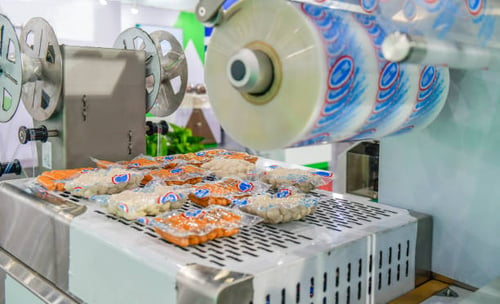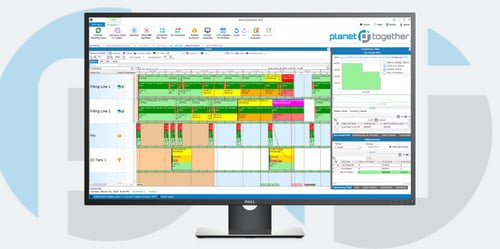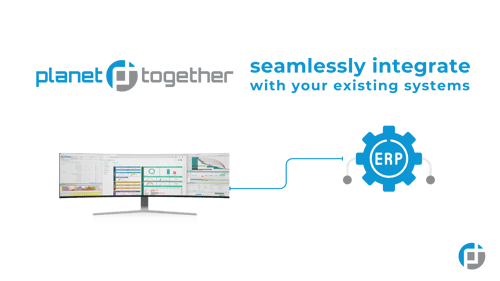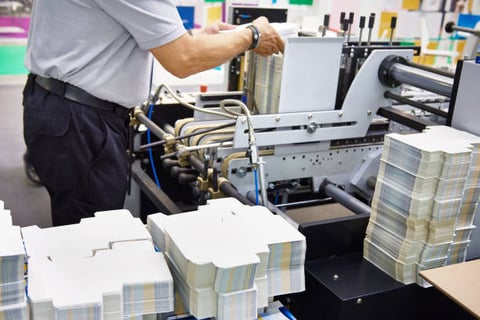
Optimizing Efficiency in Packaging Manufacturing: How Production Planners Can Leverage Integrated APS Solutions
In the fast-paced world of packaging and containers manufacturing, efficiency isn't just a goal—it’s a necessity. As production planners navigate increasingly complex demands, shorter lead times, and shifting customer expectations, optimizing operational efficiency becomes central to maintaining profitability and competitiveness.
Traditional planning tools are no longer sufficient to cope with dynamic market conditions and growing production complexity. Enter advanced planning and scheduling (APS) tools like PlanetTogether, especially when integrated with leading enterprise systems like SAP, Oracle, Microsoft, Kinaxis, or Aveva.
This blog explores how Production Planners in packaging manufacturing can optimize efficiency through digital transformation, focusing on the benefits of APS integration and practical strategies to streamline operations.
The Efficiency Imperative in Packaging Manufacturing
Production planners in packaging facilities face a unique combination of challenges:
High SKU variability and customized packaging solutions
Tight production timelines due to just-in-time delivery requirements
Sustainability mandates that require reduced waste and energy use
Equipment limitations and maintenance schedules that restrict flexibility
Supply chain fluctuations and disruptions that impact raw material availability
To stay ahead, planners must manage resources, labor, and schedules with precision—while responding in real time to demand changes and operational disruptions. This is where advanced, integrated planning solutions come into play.

The Role of APS in Driving Efficiency
Advanced Planning and Scheduling (APS) systems like PlanetTogether offer powerful capabilities for optimizing manufacturing operations:
Finite capacity scheduling that avoids overloading machines or labor
Real-time visibility into constraints and bottlenecks
Automated what-if scenarios to respond to shifts in demand or production interruptions
Enhanced resource utilization by aligning workloads across machines, lines, and shifts
When integrated with ERP and MES platforms such as SAP, Oracle, Microsoft Dynamics, Kinaxis, or Aveva, PlanetTogether APS becomes even more impactful—enabling end-to-end data synchronization and operational alignment.

Integrating PlanetTogether with ERP: A Foundation for Operational Excellence
Integration between PlanetTogether APS and enterprise systems unlocks a unified, data-driven production environment. Here’s how integration enhances efficiency:
Data Consistency Across Systems
With integration into platforms like SAP or Microsoft Dynamics, production planners can seamlessly sync bill of materials (BOM), work orders, routings, inventory levels, and sales forecasts. This ensures that planning decisions are based on accurate, up-to-date information—eliminating errors caused by manual data entry or disconnected systems.
Real-Time Feedback Loops
Integration with MES platforms like Aveva allows PlanetTogether to receive real-time data on production progress, equipment downtime, and quality performance. Planners can adjust schedules dynamically in response to actual shop floor conditions, enhancing responsiveness and reducing idle time.
Enhanced Forecasting and Demand Planning
With integration into Kinaxis or Oracle SCM, forecasted demand and supply chain constraints can be imported directly into the APS system. This empowers planners to develop production schedules that are aligned with inventory policies, supplier capacities, and customer priorities.

Key Strategies for Optimizing Efficiency Using APS
Align Schedules with Machine and Labor Capacity
Finite capacity scheduling ensures that no machine or operator is overbooked. PlanetTogether helps planners build realistic schedules that respect labor shifts, machine availability, and preventive maintenance windows.
Optimize Changeovers and Batch Sizes
Packaging lines often require significant changeover time between SKUs. With integrated APS, planners can optimize batch sequencing to minimize changeovers—reducing downtime and material waste.
Visualize and Eliminate Bottlenecks
Using Gantt charts and resource loading dashboards, planners can instantly identify overloaded machines or work centers. Integrated visibility enables proactive adjustments to maintain flow and reduce queue times.
Respond Quickly to Disruptions
Unplanned downtime or raw material delays can derail production. With real-time data from integrated systems, PlanetTogether enables fast rescheduling—reallocating work to available lines or shifting orders based on priority.
Implement KPI-Driven Planning
Production efficiency isn’t just about throughput. APS platforms allow planners to optimize for key metrics such as on-time delivery, overall equipment effectiveness (OEE), and cost per unit. Integration ensures KPI data is continuously refreshed and aligned across departments.
For Production Planners in packaging and container manufacturing, optimizing efficiency means more than just squeezing out extra output. It means smart scheduling, reduced waste, better customer service, and ultimately, a more agile business. PlanetTogether APS, when integrated with ERP and MES systems like SAP, Oracle, Microsoft Dynamics, Kinaxis, or Aveva, offers the tools and insights necessary to achieve these goals.
Efficiency isn’t a static target—it’s a continuously moving one. But with the right digital foundation, Production Planners can stay ahead of the curve, delivering consistent results in a rapidly evolving manufacturing landscape.
Are you ready to take your manufacturing operations to the next level? Contact us today to learn more about how PlanetTogether can help you achieve your goals and drive success in your industry.